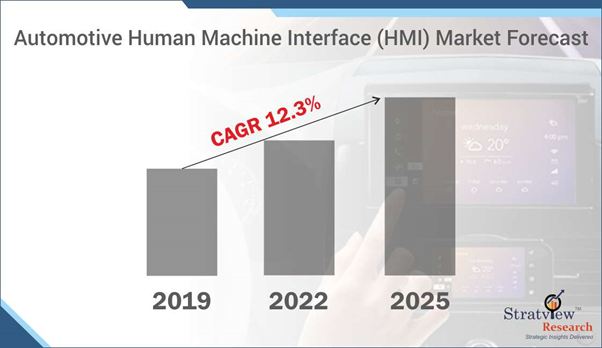Introduction:
In the ever-evolving world of automotive technology, one critical aspect that has seen remarkable progress is the Automotive Human Machine Interface (HMI) market. The HMI serves as the bridge between the driver and the vehicle's complex systems, offering a means of communication that goes beyond the traditional dashboard buttons and knobs. As we delve into this rapidly growing sector, we witness the profound impact of HMI technology on our driving experience and road safety.
Automotive HMI market is likely to witness an impressive CAGR of 12.3% during the forecast period.
Read more: https://www.stratviewresearch.com/639/automotive-human-machine-interface-market.html
The Shift from Analog to Digital:
In the not-so-distant past, the automotive HMI was synonymous with analog dials, switches, and physical buttons. Drivers had to fumble through an array of controls to manage functions like air conditioning, audio, and navigation. However, today's automotive HMI has undergone a radical transformation. Touchscreens, voice recognition, gesture controls, and augmented reality displays have taken center stage.
The Digital Cockpit:
The concept of a "digital cockpit" has gained traction in recent years. Modern vehicles feature high-resolution touchscreens that consolidate various functions into a single interface, reminiscent of a smartphone or tablet. These touch-sensitive displays provide drivers with intuitive access to entertainment, navigation, and vehicle settings.
Voice Recognition and AI Integration:
Voice recognition technology has come a long way, and it's now a standard feature in many vehicles. AI-powered virtual assistants respond to natural language commands, allowing drivers to keep their hands on the wheel and eyes on the road while managing tasks like making calls, sending texts, or adjusting the climate control.
Gesture Controls:
Imagine adjusting your volume or accepting a call with just a wave of your hand. Gesture control technology has made this a reality in certain high-end vehicles. Sensors detect hand movements, making it a safe and convenient way to interact with the HMI.
Augmented Reality (AR) Head-Up Displays:
AR head-up displays provide drivers with essential information, such as navigation directions, speed, and warnings, directly on the windshield. This technology enhances safety by reducing the need for drivers to divert their attention from the road.
Enhancing Connectivity:
Connectivity is a key focus of the automotive HMI market. Vehicles are now equipped with the ability to connect to smartphones, tablets, and the cloud. This not only enables seamless data sharing but also facilitates over-the-air updates for software and firmware, ensuring that vehicles remain up to date with the latest features and security patches.
Safety and User Experience:
While the transformation of the automotive HMI offers greater convenience and functionality, it also raises concerns about driver distraction. Balancing enhanced user experience with safety remains a top priority for automakers. Designing interfaces that minimize cognitive load and encourage responsible usage is a challenge that continues to be addressed through research and innovation.
Conclusion:
The Automotive Human Machine Interface (HMI) market is undergoing a profound revolution, reshaping how drivers interact with their vehicles. As we move towards autonomous driving and electric vehicles, the role of the HMI becomes even more crucial. Striking the right balance between cutting-edge technology, user experience, and safety will be the driving force behind the future of automotive HMIs. With the rapid pace of innovation, it's clear that the journey to revolutionize the way we drive has only just begun.
